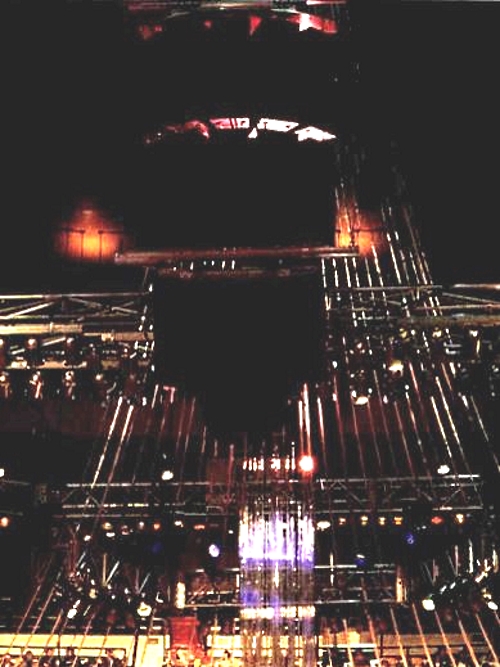
Centralized Processing System
All of these factors interact, and each affects the linearity of the system as a whole. Given the decentralized architecture of contemporary concert reinforcement systems, any attempts that we make to linearize the system – no matter how sophisticated -are invariably compromised to some extent.
In order to attain the degree of control and predictability that recording and production engineers enjoy, the system as a whole must be constantly monitored, and adjustments made on an instantaneous basis.
Ultimately, the only solution to this gargantuan task is a centralized, high-speed, real-time digital signal processing system. Such a system would replace entirely the house and onstage monitor consoles, along with the outboard signal processing and routing equipment, and would perform their functions in the digital domain.
It would also monitor the performance of the system as a whole on a continuous basis from a number of sampling points in the space, affecting corrections digitally to maintain linearity. The research and development necessary to make this system a reality will occupy much of the next decade.
As concert systems reach this level of sophistication, the work of sound reinforcement will change dramatically, becoming much more highly technical. Sound system operators, in all likelihood, will move out of the hall itself, preferring to work in an isolated environment with greater access to instrumentation.
Certainly, they will no longer concern themselves simply with individual channel gains, equalization and so on, but will interact with the system at a higher level – using controls and displays that, presently, we can only guess at.
Creative/Technical Producer
There will also necessarily be a new position in sound reinforcement: that of creative/technical producer. Individuals in this position will be responsible for many artistic decisions (much as record producers are) and will direct a team of system operators in a manner similar to that of contemporary television producers.
The work will require a high degree of musicality, technical knowledge in digital signal processing and acoustics, and – of course – communication skills. The increasing use of sound designers in the theater and in classical reinforcement may be token as evidence that the position of live sound producer is already emerging. Clearly, the effect of these changes will be to ennoble the concert sound reinforcement profession as a whole.
In the future, the technical staff will be regarded less as simple piano movers, and more as full creative partners in the shaping of events.
Undoubtedly, the capabilities of the next generation of concert sound systems will open up new creative possibilities, influencing the music as well.
It seems safe to predict that as a result, live performances will continue to be a vital part of the music field well into the future.
Editor’s Note: This is another in a growing a series of articles from Recording Engineer/Producer (RE/P) magazine, which began publishing in 1970 under the direction of Publisher/Editor Martin Gallay. After a great run, RE/P ceased publishing in the early 1990s, yet its content is still much revered in the professional audio community. RE/P also published the first issues of Live Sound International magazine as a quarterly supplement, beginning in the late 1980s, and LSI has grown to a monthly publication that continues to thrive to this day.
Our sincere thanks to Mark Gander of JBL Professional for his considerable support on this archive project.
Take a look at the latest news from Meyer Sound here.
